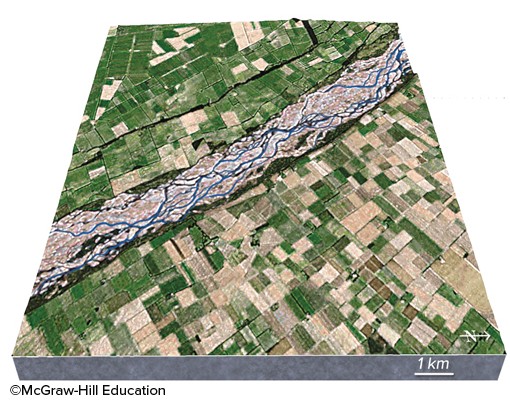How do sustainable animal farming and industrial-style animal farming affect the environment on different scales?
What will be an ideal response?
"Industrial-style animal farming can affect the environment in a host of non-sustainable ways. Because so much of the plant crop is fed to animals, all the problems of industrialized agriculture apply to animal farming. In addition, rangelands are susceptible to overgrazing, either because of mismanagement of prime grazing land or because the land on which the animals graze is marginal dry grassland, used in that manner because the better lands have been converted to producing crops. Another serious problem is the management of animal manure. Close to 1.3 billion tons of animal waste is produced each year in the United States, some of which leaks into surface waters and contributes to die-offs of fish, contamination with pathogens, and a proliferation of algae." Land in the tropics has been converted to grazing land; much of this land is not suitable for long-term grazing. Climate change is also influenced by cattle production. The digestive process of cows is anaerobic; "cows and other ruminant animals annually eliminate some 100 million tons of methane, another greenhouse gas, through belching and flatulence. The anaerobic decomposition of manure leads to an additional 30 million tons of methane per year. All this methane released by livestock makes up about 3% of the gases causing global warming."
Sustainable animal farming is more easily done on small rural farms with pastoral herds, as seen in the developing world. The soil can be enhanced if the animals are well managed. The nutrition of women and small children is especially enhanced.
You might also like to view...
Air ________ inside the eye of a hurricane
A) rises and cools adiabatically B) rises and warms adiabatically C) sinks and cools adiabatically D) sinks and warms adiabatically
Water vapor (H2O) has a longer residence time in the atmosphere than carbon dioxide (CO2 )
Indicate whether the statement is true or false
Normal sea level pressure has a standard value of 1013.2 mb (29.92 in. of Hg)
Indicate whether the statement is true or false
What type of stream is shown in this figure?
A. meandering stream B. an esker C. braided stream D. a stream whose main channel has high sinuosity